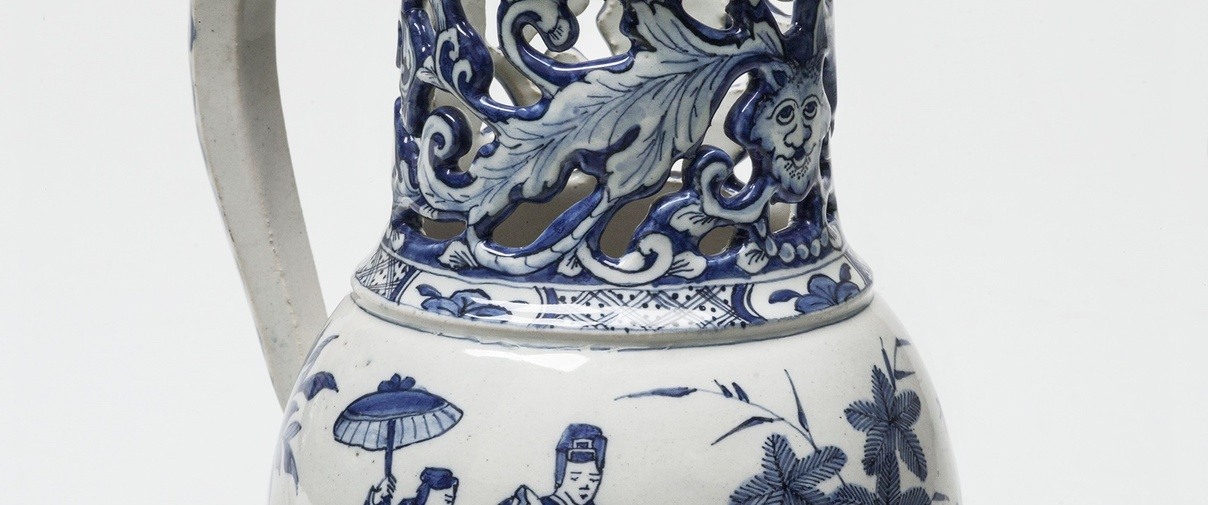Puzzle jug
Cheers!
Suppose you are having a party. The guests have been invited, the streamers are hanging, drinks and snacks are temptingly displayed on the table. There is good music, in short, nothing seems to stand in the way of a pleasant evening. But even if all the conditions are met, it can still happen that a moment of boredom arises. What do you do when you notice that your party is in danger of collapsing? Time for a drinking game! Traditionally, this is a tried and tested method to increase the party joy.
In the seventeenth and eighteenth centuries, special drinking vessels made of glass, silver or ceramics existed for these kinds of occasions, often referred to as ‘snakerijen’. A well-known example is the boot glass, which still causes hilarity at many parties today. This glass is shaped like a high boot. The idea is to drink the glass empty as quickly as possible with the toe of the boot pointing upwards, without spilling anything. This goes well until the inevitable air bubble forms in the heel of the boot and the beer flows over the drinker’s face.
Another example is the mill cup, usually made entirely of silver. This cup consists of a chalice on one side and a mill with sails on the other side. As soon as the cup is filled, you blow the mill sails into motion. Before they stop, the glass must be empty. If that does not work, a new round follows.
